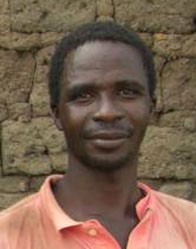Seemogo in Burkina Faso

Photo Source:
Copyrighted © 2026
GoWestAfrica All rights reserved. Used with permission |
Send Joshua Project a map of this people group.
|
| People Name: | Seemogo |
| Country: | Burkina Faso |
| 10/40 Window: | Yes |
| Population: | 26,000 |
| World Population: | 33,000 |
| Primary Language: | Seenku |
| Primary Religion: | Islam |
| Christian Adherents: | 15.00 % |
| Evangelicals: | 12.00 % |
| Scripture: | Translation Started |
| Ministry Resources: | No |
| Jesus Film: | No |
| Audio Recordings: | Yes |
| People Cluster: | Mande |
| Affinity Bloc: | Sub-Saharan Peoples |
| Progress Level: |
|
Introduction / History
The Sambla or Sembla people are subsistence farmers in their traditional, rural homeland. They earn cash principally through market gardening, but also by growing cotton, or selling wood or animals, particularly pork. Peanuts are grown by women who may sell part of their harvest. Their largest village is Karankasso. Other Sambla live in the city of Bobo-Dioulasso, 45 km away. Many young women work in Bobo-Dioulasso and come back to the village at the beginning of the rainy season to help in the fields. Sambla country is hilly, the highest elevation is 618 meters.
Health care is poor. There is a health center in Karankasso and in Banzon, but people are not comfortable with modern medicine. In mid-1993, almost 25 children died of measles in Karankasso alone. There is no electricity or telephone, and no secondary school. Many people have radios, and use bicycles for transportation, or bush-taxis if they can afford to.
The Sambla are known for their Balafon music. They play the balafon with three players, which is very uncommon. Balafon is a form of language which anyone who grew up in the rural area understands. There is a Sambla troupe which performs traditional music and dance, who won a prize at "Bobo-92".
In the mid 1950s, Catholic missionaries came, and today, a large number of Sambla are Catholic. Another important event was the influence of the "prophet" Moussa (French for "Moses") from Ivory Coast. He preached against traditional religions which he considered evil. Many turned to Islam or Catholicism at that time, though now many are returning to their traditions.